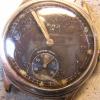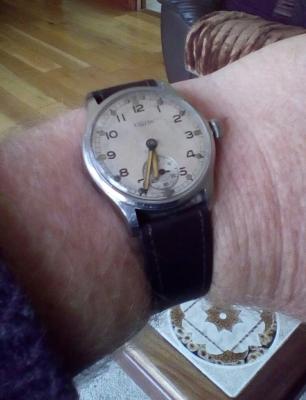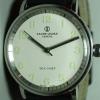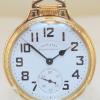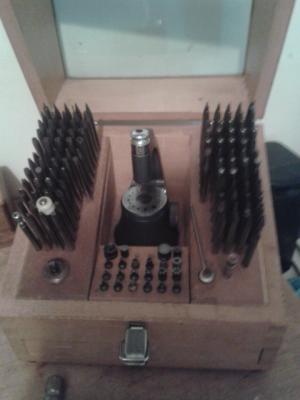Leaderboard
Popular Content
Showing content with the highest reputation on 05/01/15 in all areas
-
2 points
-
1 point
-
All this talk of staking sets gives me an appetite for one of my tasty steaks, and I thought I'd share the recipe with you. So here goes: 1. Start with a nice piece of steak - you don't need expensive fillet for this - a nice piece of sirloin will do, or even rump. 2. You'll need a cast iron griddle - one of those heavy, square Le Creuset-type pans with a ribbed cooking base. 3. Scatter sea salt on to a chopping board or a large plate and turn the steak in the salt until well covered all over. 4. I always cook with gas but, whatever medium you use, turn up the hob heat to maximum, until the pan is smokin'! 5. When the griddle is piping hot, on goes the salted steak - no oil, no butter - just steak. 6. Turn the steak over every 30 seconds and cook to your preference - 4 minutes, 6 minutes, etc., until done 7. Eat! Tasty? Mm mm! Have a good Bank Holiday weekend! Will1 point
-
Just as a tip, if you are disassembling a movement to which you are unfamiliar with, take a photo at each stage of disassembly. This way when you need to put the movement together again you can work from the photos in reverse order with each showing the location of every part. Although this can be tedious with many photos, it will make life a bit easier until knowledge has gained. Thats how i started many many years ago ( and on occasion today if i have never worked on a specific caliber ). I hope someone with familiar knowledge of this movement can help :)1 point
-
Hi Ken! I can't help but can at least reassure you that your post is being looked at. :) John1 point
-
1 point
-
Well after stripping the escapement down i discovered ( with the aid of my microscope :) ) there was some hardened oil/grease within two of the jewel holes ( balance and pallet ). It was quite stubborn but after a good de grease of the entire escapement the watch now runs within +- 20-30 secs and the beat error is down from 6.00+ to just 1.0 -1.1 , i can happily live with that for a watch that is 70+ years old :) The watch originally was badly water damaged with alot of rust reaching nearly every part of the movement, so to have it running at all after the original condition i can say im pleased with the outcome. The timegraph result initially had me thinking it was a bent escape wheel pivot, but turns out it was just super hardcore crud , albeit micro hardcore crud ha ha. Since i know you guys like your pictures i figured you'd like to see the watch in question, she just needs a new strap and then shes done :D Dial Cleaned - Casing Polished - Original Hands Zenith 10"'-1/2 - 2 - 9kt Gold Cased Funny to think that id overlook one of the basics of it being just dirt.... ( slaps forehead ) Thanks though guys :) U R Awesome !1 point
-
Having looked at the picture of the device I'm sure it looks like it may do the job with a bit of modification. It appears to be quite large and you might have to install some fine mesh or use small mesh baskets to keep parts together. Would I buy one............no.1 point
-
1 point
-
If I wan lottery I would get two of these; one for working (and scratching :-) ) and one for looking. :D1 point
-
1 point
-
So I found this in a junk bin and decided to fix it up a bit. It took a little work but I found the information. The watch is a quartz Seamaster Jubilee (MD 396.0969) 1432 caliber, 6 jewels, created in 1983. The first thing that needed to be taken care of was figuring out what model it was, and to do this, I had to remove the caseback. Problem? Well, just looking at it tells you it’s a snap back, but there was no **BLEEP**in’ place for purchase with a case knife or any other tools I have. Finally, I pulled out the superglue and a Nut. Glued the nut to the caseback, let it cure overnight, and the back popped off easily. Let the caseback/nut sit in acetone overnight and the glue completely dissolves, leaving a clean back. After doing the necessary homework, I was able to source a gen stem and crown, in Poland of all places, and put in the order. Now it’s time to remove what’s left of the broken stem Since it was broken flush with the tube, there was no way to grip it But here I was both lucky and unlucky. The stem slid out easily enough when I could access it through the case next to the movement, but that also meant there were problems with the keyless. As you can see, there is no visible stem release, so to get to the keyless, I first had to remove the electronic components And now we have the exposed keyless which will have to be disassembled to diagnose. Turns out, the keyless just needed to be reset. So, service and reassembled, it’s now time to replace the stem. Definitely too long, so I needed to cut and file it down to proper length. Nice snug fit in all three positions (here it’s in position 2) Test and reassemble electronics Then it was just a matter of completing the service and reassemble. I’m buffing the case now to give it a nice shine, but since I kind of wanted the aged look to be kept, I’m not doing much more. Not touching the dial, but I may relume it. All in all, I enjoyed working on this. It’s a bit of history, sentimentality, and intelligent design that lends to the understanding of why Omega is what it is today.1 point
-
Oh okay, I tend to assume the worst, figured you were just some random person trying to save a buck on watch repair, which gets under my skin. Hopefully we can be of some help to you, polishing, or refinishing steel is tricky, I advise you watch Now most of that can be applied with a dremel or other motor, you don't necessarily need a bench motor. For compounds and wheels I advice you get a couple of mini felt wheels, chamois, and cotton for your motor, for 'buffing' use the felt in conjunction with grey dialux, and for polishing use chamois or cotton in conjunction with green dialux. So there's a bit of a shopping list there but it shouldn't mount up to more than £20, there's tonnes of other ways you can go about it, and other things you can get, but that's my starting recommendation. Check out the suppliers section of the forum to find where you can get what you need. http://www.watchrepairtalk.com/links/category/1-watch-clock-repair-suppliers/1 point
-
Here it is all cleaned up and on a test run Have to say when the timer alarm went off it made me jump lol1 point
-
1 point
-
Thank you, I appreciate the comment. To make my watch shiny I simply do the shower with them :)1 point
-
I'm as addicted to buying tools as I am watches. Quality tools will always retain good value if cared for and they are things of beauty to look at and use!1 point
-
hi everyone, i wasn't sure i needed a staking set until i bought mine. it opens up a whole world of possibilities that are not there without it. i now focus on buying watches with broken balance staffs as i can replace one in a few minutes now. removing and replacing jewels, roller tables etc. etc... you can pick up a watch with a broken staff for a fraction of the price of a runner. i use my set all the time and it has paid for itself over and over.1 point
-
Wether watch repair is your hobby, or you wish to train as a watch repairer, you will need to buy some tools at some stage. These are the 10 most useful tools you will need in your kit.There is the right tool for every job in all trades and this is especially true for watch repairing. No matter how many tools you have, there always seems to be something needed. I know many watch repairers, some with many, many years behind their belts, who truly enjoy sifting through a catalog of tools in order to see what would make their lives easier. Indeed, I have almost 25 years in the trade, and I have so many tools. But occasionally I enjoy the purchase of that new tool which will make my life easier. And there is no better feeling than buying the best quality and knowing that you are using the best. That being said, there are several tools which are very important to have on day one of your watch repairing career. And even if you are an enthusiast and watch repairing is your hobby, you should consider these 10 tools at a minimum to be in your tool box. 1. TWEEZERS OK, so tweezers are of paramount importance. A good, well maintained pair of tweezers are needed. But you really should consider having several sizes for different jobs. · Size 2 This will be for picking up heavier pieces. These are useful for handling train bridges and base plates. And as general use when working on pocket watches. · Size 3 These are finer than size two and are useful for general purpose when working on wrist watches. · Size 5 This size will have extremely fine tips and are most useful when working on watch escapements and manipulating hairsprings. · Size AM.BR These are quite heavy tweezers made of brass. These are useful when working on high grade watches where you do not wish to risk scratching any of the watch plate surfaces. Other sizes are available but you really should consider the above at a minimum. There are many choices even after you have chosen which sizes to purchase. You can get carbon steel, stainless steel and anti-magnetic. There are also brands such as Bergeon, Horotec and Dumont. Many professional watch repairers tend to use Dumont as they have a fantastic range to choose from. In particular I can recommend the Dumostar range. These are anti-magnetic but also quite hard wearing. If you bend or damage the tips on your screwdrivers then you can re-shape them using a sharpening stone. If they get too worn then they are still useful for rough work like lifting spring bars when fitting straps etc. 2. SCREWDRIVERS A decent set of screwdrivers is, naturally, a must. There are many manufacturers and qualities to choose from, but it is not recommended to use the cheap variety sold on eBay or at your local market as these will usually have very soft tips and could likely slip and cause damage to the watch you are working on. Popular brands include A&F, Bergeon and Horotec. A&F manufacture a great set of screwdrivers for a reasonable price, and these are an excellent choice for getting started. Many watch repairers may debate over which is best between Bergeon and Horotec. I prefer Bergeon with the ergonomic heads. Other watch repairers I know swear by the Horotec's. Everybody I know seem to agree that the Bergeon fully ergonomic screwdrivers are terrible (the ones with the rubber shaft). 3. HAND LIFTING TOOLS Essential for removing the hands from a watch. There are two kinds · Standard hand lifters These come in pairs and are metal rods with a tapered flat edge at the tips which is curved into a blade and will have a 'v' cut in the blade centre. These come in several sizes which would be useful for small watches up to small clocks. · Presto hand lifters This is a single tool which has a spring loaded lifting mechanism. It is useful to have both kinds. My preference is the standard hand lifters. 4. CASE OPENING TOOLS A case knife is essential for opening a watch case with a snap-on back. It is advisable to keep the blade both sharp and well maintained to reduce the risk of damage to yourself or the watch case. A Jaxa tool is used for opening a watch case with a screw on back. It will come with several tips for different types of watch back. There are a couple of sizes, a standard size and a large size. You can buy the original Jaxa or a cheaper replica. You should use the opener with the watch case mounted in a case vice (preferably further secured in a bench vice). 5. CASE VICE When opening a screw-down watch back, you should consider using a case vice which will help to minimise damage to the case and potential injury to your hand. It is even better to secure the case vice in a bench vice. 6. BLOWER When working on your watch, you should NEVER blow on the movement or any parts with your mouth. This will likely cause corrosion. You should use an air blower instead. There are a couple of types - a bellows style and a pump style. The bellows style is a bit more aggressive and the pump style is more gentle. 7. MOVEMENT HOLDERS When the watch is out of the case, you will want to minimise touching the watch with your fingers. You will also not want to put pressure on the watch when undoing screws and you could break parts. So using movement holders is very advisable. There are regular universal movement holders in various sizes and shapes. and you will find movement holders for specific movement calibres like the Valjoux 7750 or ETA 2892-A2 for example. 8. EYE GLASSES (LOUPES) You should invest in eye glasses with quality optics. An eye glass is usually worn in your eye like a monocle. You will find these manufactured by A&F, Bergeon and Horotec. At a minimum you should have a low magnification (x4) and a high magnification (x10) for close inspection work. This is very important when fault finding. You can get a clip for your spectacles and there is also a head band available for people who cannot get used to wearing an eye glass which can be quite tricky at first. 9. OIL POTS Oil pots are inexpensive and a must in order to aid you in getting the correct amount of oil on your oilers. There are cheap and very expensive oil pots and to be fair it does not really matter which ones you opt for as long as they serve the purpose of keeping dust off your precious oil. 10. OILERS These are fine, specially shaped needles with handles. They are used for transferring small amounts of lubricant from your oil pot to the desired location. And so this, by no means, is an exhaustive list of all the tools you need to repair watches. In fact, these are the most basic of requirements. I have not mentioned pliers, pin vices, broaches, reamers, files, cutters and measuring equipment. But I will follow up this article with a further list of tools you will need as you expand your tool kit.1 point
-
Indeed - and buy a bunch of scrapper watch movements off eBay - not for repairing them but simply to practice dismantling and re-assembly, this will help to develop confidence in your tools.1 point



